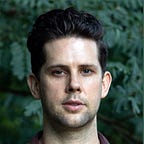How to notice when you’re being too hard on yourself
One of the many stories passed down about Gautama Buddha, or the Buddha, goes like this:
The Buddha once asked his students, “If a person is struck by an arrow, is it painful?” A student replied, “It is.” The Buddha then asked, “If the person is struck by a second arrow, is that even more painful?” The student replied, “It is.” The Buddha said, “In life, we cannot always control the first arrow. However, the second arrow is our reaction to the first. And with this second arrow comes the possibility of choice.”
The first arrow in this parable is often interpreted as human nature. Meditation teacher Tara Brach, in her latest book, True Refuge, writes, “The first arrow is our human conditioning to cling to comfort and react with anger or fear to unpleasant experience.” The arrow, or the pain, is our tendency to attach to things that give us comfort—like someone we love—and run from or fight against those that don’t. When those things change—as everything inevitability does—we often keep grasping or running or fighting, wishing things were different. This wishing is painful because things aren’t different — they are as they are.
Sometimes, the first arrow can be felt in our body. For me, a tight stomach—especially back near the spine—or tense shoulders is a sign that I’m resisting something, the first arrow’s pain.
The second arrow, then, is our reaction to this resistance. We often blame ourselves for our reaction to the pain or annoyance of the first arrow, as if our “self” was a separate, solid thing, as if we were someone else. We tell a story about ourselves in our minds, like, I’m too lazy to be successful, or no one will ever truly love me. We fire another arrow into ourselves because we were hurt by the first, which we can’t quite control anyway.
The stories that fuel the second arrow are really hard to spot—sometimes only a teacher, therapist, or a good friend can do it. Many stories come from adults that were around early in our lives, especially parents. Like genetics, we carry these stories into our lives — they are so crucial we wouldn’t know who we were without them. Fear is a part of life, and the stories are like a cocoon that seems safe but isn’t. American Buddhist nun Pema Chödrön says we stay in our cocoon because “we’re afraid of our feelings and the reactions that life is going to trigger in us.”
A few weeks ago a magazine turned down an essay of mine after showing some interest in it. The stories appeared as I read the email: I’m not a real writer. I should write more. I should challenge myself more so I can write with wisdom. These stories only doubled the blow of rejection. I didn’t notice these stories right away—it takes time and intention to sharpen this tool. One way to spot second arrows is to watch for the word “should.”
For most of us, a spiritual practice like meditation can help recognize in the moment when we are shooting ourselves with the second arrow—when we are judging ourselves for our reaction to something we can’t control.
But I think it’s useful to add a third arrow to the Buddha’s story. Like the second, this arrow is our reaction to the pain of the first, but this time our reactivity comes from injustice. All human societies are unequal. Ours was built by capitalism, patriarchy, and white supremacy, forces that separate and rank humans. This separation has been enforced systemically through economics and state violence. The U.S. wouldn’t exist as we know it without the genocide of indigenous Native Americans and the forced labor of enslaved Africans, or the trapping of women inside the private space of the home where work goes unpaid. These realities have justifying stories—like, caring for children is “women’s work”—that became a “common sense” dangerous to question.
The third arrow is the tendency to judge ourselves because of these forces. The accompanying stories are about us but they derive from society. For example, young black men too often appear as criminals in waiting, to cops, on the news, to white Americans moving into poor neighborhoods, while the deep wounds of systemic racism, from slavery to mass incarceration, go unacknowledged.
Just like the second arrow, the third is difficult to spot. Education and discussion can help us recognize which parts of our self-blame are second or third arrows.
As a straight, white man, I often experience injustice as an empowering force, as a tacit expectation from others that I’ll take the lead. But I’ve learned that only when I listen and provide space for others to speak their truth can I actually speak with the authority of my own—I am still learning this lesson, over and over again. There are also spaces where my whiteness has little value, albeit very few. While studying at Georgetown, my lack of family history and wealth sometimes felt like a handicap.
Everyone’s third arrow is layered by many forces of injustice, some oppressing and some empowering. Black feminists, by claiming and naming this layering “intersectionality,” offered a tool to recognize the way these injustices are experienced. Noticing the third arrow requires these sorts of tools, and human history is rich with them, from theoretical practices like Marxism and feminism to collective practices like unions and cooperative ownership.
The ability to notice when you’re being too hard on yourself, to accept yourself, to love yourself, requires both “inner work,” like spiritual practice, and the “outer work” of recognizing and fighting injustice. I don’t believe one can accomplish much without the other.
This post first appeared on futuredebris.com.
Want an email whenever I post? Sign up here.
